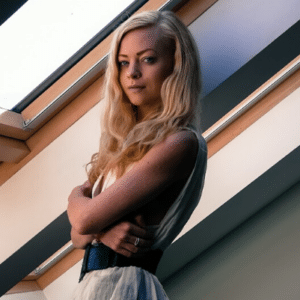Physio Individuals, Physio Practitioners, Professionals
Is the Barefoot Revolution Here to Stay?

Kitiara Pascoe
03 / 03 / 2020 – 2 min read
Is the Barefoot Revolution Here to Stay?
Whether you’re a physiotherapist, a masseuse or another professional in the physical health space, new trends might make you groan.
As dieticians dread the next crazy diet, physical therapists tend to view fads with suspicion. Sometimes though, fads might not be fads at all. They might turn into revolutions. So how do you know whether you should be supporting a new trend or be concerned about it?
Often, there’s no straight answer. Many physical therapists have to help their patients ensure the trend isn’t doing any damage and wait and see if it’s all it’s cracked up to be.
With barefoot shoes though, the revolution is set to stay and perhaps for good reason.
What Are Barefoot Shoes?
Barefoot or minimalist shoes are those with a thin sole without support, so it approximates the feeling of walking (or running) barefoot. Many companies have begun making them to some extent or another but there are few that are considered truly barefoot.
What’s the Point of Barefoot Shoes?
The soles of the feet are covered in nerves that send sensory information to help us balance and allow our muscles to work correctly. When we wear shoes that alter pressure distribution and the way we walk, there’s a risk that this sensory information is not getting picked up.
Barefoot and minimalist proponents suggest that wearing shoes with heavy padding is responsible for many common injuries and chronic problems such as back pain, knee injuries and foot pain.
The point of barefoot shoes is to reclaim our natural way of walking before shoes became so cushioned yet without risking the injury of literally walking barefoot.
What Does the Science Say?
The Harvard researcher Daniel Lieberman and his team found back in 2010 that the impact experienced in runners who wore cushioned shoes was significantly more than those who ran barefoot. This seemed to be down to the barefoot proclivity to forefoot strike and the shod proclivity to heel strike.
A new study however, suggests that it’s not down to the shoe type so much as the footstrike. If a shod runner ran with forefoot strike, they too would experience lower impact levels.
Another recent study from Lieberman and his team shows that people who walk barefoot or in minimalist footwear have a tendency towards stronger feet and arches than those who are traditionally-shod.
Their results suggest that those who wear modern, cushioned shoes have generally weaker foot muscles, increased incidence of flat-footedness and a potentially greater risk of injury.
What Does This Trend Mean for Physical Therapists?
If barefoot and minimalist shoes can help prevent foot and knee injuries, then that has huge benefits for everybody. However, making the switch from modern cushioned shoes to barefoot quickly could result in injury, especially in runners.
Physical therapists need to be aware of the risks to their patients who may be enthusiastic to dive into this movement and advise them, as barefoot shoe companies do, to ease themselves into it.
Walking and running in barefoot shoes without essentially re-teaching the feet how to move in this way, opens those new to barefoot shoes up to injury. As foot anatomy and muscle strength can vary from person to person, care needs to be taken in finding out whether barefoot shoes are appropriate at all for some patients.
While physical therapists aren’t necessarily going to be experts on the pros and cons of different types of shoes, they are trusted professionals who patients may come to about their desire to start wearing barefoot shoes.
If barefoot shoes just help strengthen foot muscles, that’s a benefit well worth taking advantage of. If they’re causing damage though, wearers need to be on the lookout for symptoms.
Where to Find More Information
Getting as informed as possible about trends you might watch come through your clinic door is always a good idea, whether they’re here to stay or not. As barefoot running has been in the public eye for almost a decade now and is seeing increased interest, here are a couple of resources to learn more.
- Dr. Rangan Chatterjee’s interview with VIVOBarefoot founder, Galahad Clark. Dr. Chatterjee has worn barefoot shoes for many years and is a strong supporter of them. It should also be noted that the company sponsor his podcast.
- Trail Runner created an interesting list of studies done on the subject. If you were hoping for a black and white answer about whether barefoot running is good or bad, you might be disappointed though.
Looking After Your Patients’ Foot Health
No matter what comes of the barefoot shoe trend, you’re likely to see many patients with foot problems, stiff muscles and tension. If you’re looking for foam rollers to help solve their problems, check out our range.


